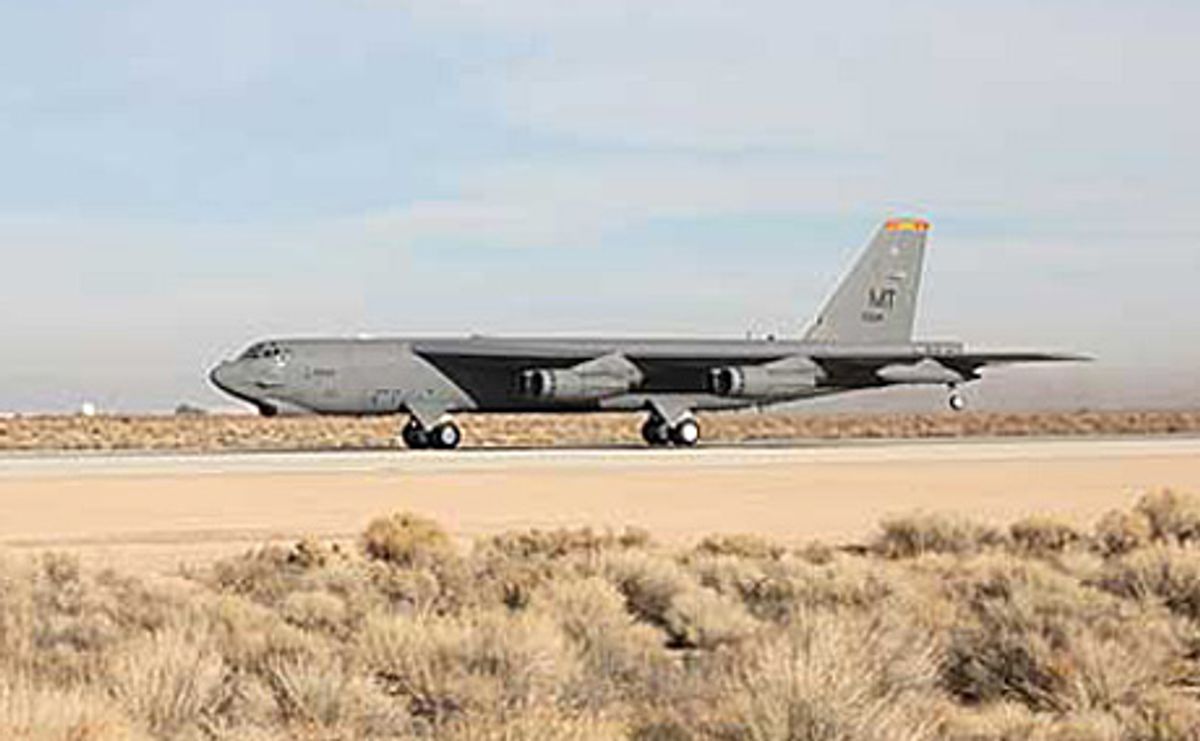23 August 2007—A camp of protesters outside England’s Heathrow Airport broke up on Monday following days of activities meant to bring attention to the airline industry’s outsize contribution to climate change. For every kilometer a person travels, flying adds just as much planet-warming carbon dioxide as driving does.
The camp’s mix of anarchists, environmentalists, and members of Parliament might find it ironic that a solution to aviation’s carbon habit may come from the U.S. military. The U.S. Department of Defense is pumping millions of research dollars into projects to turn mustard plants, algae, waste animal fats, and a host of other organic matter into jet fuels. If the military projects succeed, they could become a catalyst for planet-friendly commercial aviation technologies.
Flying takes its toll on the atmosphere. The United States burned 25 billion gallons (95 billion liters) of jet fuel in 2004, according to the U.S. Energy Information Administration. That translatesto about 240 million metric tons of carbon dioxide emitted by military and commercial aircraft. If the military switched its jets to carbon-neutral biofuels, that would reduce carbon dioxide emissions more than 27 million metric tons.
Carbon reduction is not the U.S. military’s real goal. Instead the defense department’s main motivation in pursuing biofuels is to reduce its dependence on foreign oil. In particular, the Pentagon wants to make it easier to supply troops in foreign battle zones and distant military outposts—right now, the military has to ship fuel to Iraq and to its bases in Hawaii. ”One of the things we’re looking at is being able to make smaller scale production facilities that might be able to travel with some of the troops,” says Douglas Kirkpatrick, biofuels program manager at the Defense Advanced Research Projects Agency (DARPA).
Bringing down cost is another key incentive. In 2006, the DOD consumed more than 13 billion liters of JP-8 (jet propellant) fuel, at a hard-to-swallow cost of over US $6 billion.
A cheap bio–JP-8 technology might prove a boon to the environment. How plants are grown and the way they are converted into fuels determines how environmentally responsible a biofuel is, says Nathanael Greene, a renewable energy specialist at the Natural Resources Defense Council, in New York City. Clearing out natural forests and using tons of pesticides and fertilizers is a bad choice. So is using only the sugar or oil-producing seeds of the crop, as opposed to cellulosic biofuel technologies that use stalks and leaves.
Right now, all three of the DARPA biofuels program’s contenders—the University of North Dakota’s Energy & Environmental Research Center, GE Global Research, and Honeywell subsidiary UOP—are working with soy and canola oil. But to ensure that the fuel is cheap, DARPA's Kirkpatrick says that they will have to move away from soy and canola to avoid competition with food and biodiesel producers. Cellulosic biomass, and weed crops such as mustard, which grow on wasteland and don’t need much water or fertilizer, are contenders.
But the DOD is also looking at less benign jet fuel alternatives, such as synthetic liquid fuels, or synfuel, made from coal. The U.S. military’s largest jet fuel consumer, the Air Force, has already tested B-52s on a JP-8 and synfuel blend. It plans to have all its aircraft ready for synthetic fuels by 2010. Not surprisingly, the NRDC’s Greene says that coal-based liquid fuels are an environmental disaster. They lead to twice the carbon dioxide emissions of burning coal: when you combine the carbon dioxide from production plants that convert coal to liquid fuels and from vehicles that burn the fuel. The defense department’s eventual choice for bio–JP-8 technology could thus have even bigger repercussions for the environment if it prevents a shift to coal-based fuels.
Commercial airlines might beat the military to demonstrating a biofuel-powered jet. In April, British carrier Virgin Atlantic Airways took the energy and aviation industry by surprise, announcingthat it would demonstrate a Boeing 747 flying on biofuels in 2008. Keeping its technology a secret, the company didn’t specify what the biofuel would be made from. Virgin CEO Sir Richard Branson has said that his motive is to fund clean energy sources, while for Boeing this is a step toward reducing oil consumption and carbon dioxide emissions. Airlines are currently exempt from the emissions caps large industries in Europe are subject to, but there is pressure to include them.
But NRDC’s Greene says that biofuels cannot be the only answer. Instead, the first step, just as for carmakers, should be increasing fuel efficiency. The new Boeing 787 Dreamliner, which uses 20 percent less fuel per passenger than other planes the same size, in part because of its lightweight composite body, is a good example. As more and more people fly, a headlong rush into biofuels for jets will inevitably put pressure on natural resources, increasing land and fertilizer use. ”If we try to address all of our global warming concerns with biofuels we won’t be able to get there,” Greene says, ”certainly not without causing significant environmental problems.”
About the Author
Prachi Patel-Predd is a writer and radio reporter based in Pittsburgh, Penn.
